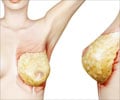
Ilse Ceelie, M.D., Ph.D., of Erasmus MC-Sophia Children's Hospital, Rotterdam, the Netherlands, and colleagues performed a trial with infants who had undergone major abdominal and thoracic (noncardiac) surgery to determine if intravenous paracetamol would reduce the cumulative morphine dose needed to provide adequate analgesia by at least 30 percent. The randomized study was conducted in a pediatric intensive care unit and included 71 patients (neonates or infants younger than 1 year) undergoing surgery between March 2008 and July 2010, with follow-up of 48 hours. All patients received a dose of morphine 30 minutes before the end of surgery, followed by continuous morphine or intermittent intravenous paracetamol up to 48 hours postsurgery. Infants in both study groups received morphine as rescue medication based on the guidance of the validated pain assessment instruments.
The researchers found that the cumulative morphine dose in the paracetamol group was 66 percent lower than that in the morphine group (median [midpoint], 121 μg/kg per 48 hours vs. 357 μg/kg per 48 hours). "Considering the 2 stratified age groups separately, the cumulative morphine dose in the paracetamol group was 49 percent lower than that in the morphine group for the neonates (age 0 through 10 days) (median, 111 μg/kg per 48 hours vs. 218 μg/kg per 48 hours) and 73 percent lower for the older infants (aged 11 days to 1 year) (median, 152 μg/kg per 48 hours vs. 553 μg/kg per 48 hours)."
The authors also found that neither the total morphine rescue dose, the amount or number of morphine rescue doses or the number of patients requiring rescue doses differed significantly between the paracetamol and morphine groups. Also, there were no significant differences for percentage of adverse effects or pain scores between treatment groups.
"This randomized controlled trial shows that infants who receive intravenous paracetamol as primary analgesic after major surgery require significantly less morphine than those who receive a continuous morphine infusion. Judging from the rescue morphine doses, a similar level of analgesia was obtained in either group. These results suggest that intravenous paracetamol may be an interesting alternative as primary analgesic in neonates and infants," the authors conclude.
"Titrating morphine analgesia carefully (based on pain scores) is more labor intensive than the common practice of slightly oversedating infants who require opioid analgesia for painful conditions, such as following operations. However, this approach may avoid the respiratory depression, hypotension, and opioid tolerance observed in many centers. Busy clinical units will have to choose between the nursing resources required to follow such a labor-intensive protocol or to tolerate a relatively low incidence of oversedation and opioid-related adverse effects. Theoretically elegant approaches have little value in clinical practice if they are not practically feasible in the clinical settings for which they were designed. However, research studies such as the report by Ceelie et al are invaluable because they bring methodological rigor and continue to set new standards for future clinical practice."
Advertisement











